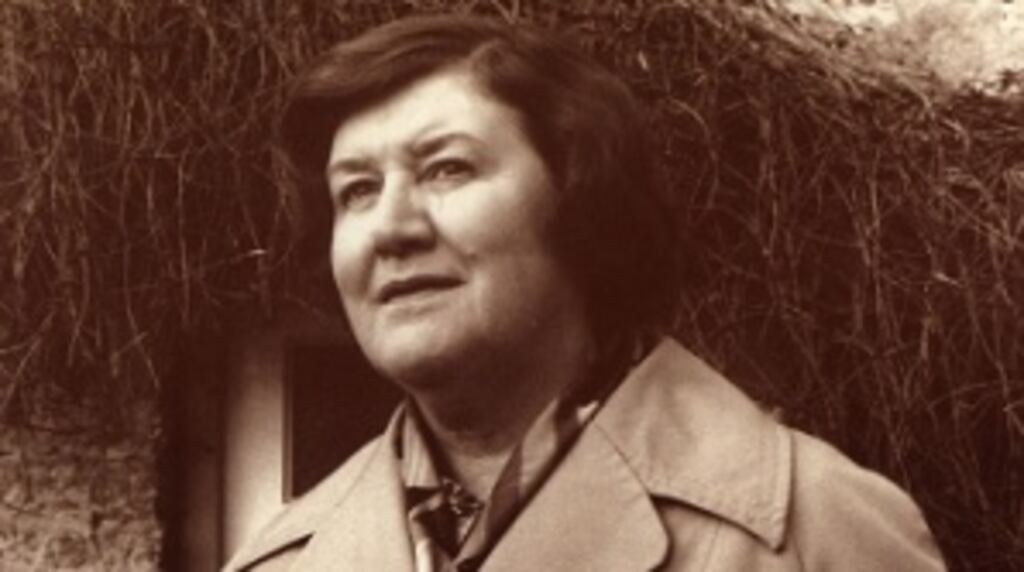
There can be few literary comebacks more satisfying than that of Barbara Pym. In the 1950s and early 1960s she published six novels, stories about ordinary women, often single, books that revel in the minutiae of everyday middle class life. They are the sort of books that could appear – and sometimes have appeared, thanks to the ill-judged covers and blurbs Pym’s work has sported over the years – to be dreary, cosy or both. Yet as anyone who has read them knows, those novels are anything but dreary or cosy. They are sharply funny, insightful, moving and highly entertaining.
In 1963, Pym submitted her seventh novel to her publisher Jonathan Cape. To her shock and dismay, it was rejected as being too uncommercial. Other publishers rejected it too. Pym, who had a day job as an editor, was determined to keep writing fiction – and indeed she kept writing novels for more than a decade, despite failing to find a publisher for any of them. She was told, bluntly and repeatedly, that her sort of fiction didn’t sell anymore.
Then in 1977, when she was in her mid-60s, a miracle happened. The Times Literary Supplement ran a big piece on the most underrated and overrated writers of the 20th century. Among the many suggestions of underrated writers, only one name appeared twice. That name was Barbara Pym, who was championed by Lord David Cecil, the distinguished academic and literary critic, and the poet Philip Larkin.
Pym’s fortunes changed overnight. She was interviewed on radio, in print and on television. Her latest novel Quartet in Autumn was snapped up by Macmillan (deliciously, when Jonathan Cape wrote and said they would love to publish it, she was able to tell them they had already rejected it and now she had a new publisher). It was shortlisted for the Booker Prize.
Personal papers
Like many of Pym’s novels, Paula Byrne’s superb new biography of the author illustrates the limitations, challenges and opportunities faced by educated single women in the 20th century. One of two daughters who grew up in a middle class family in Shropshire, Pym went to Oxford in the early 1930s, where she forged relationships that would last until the end of her life. It was at Oxford that she had her first love affairs with unsuitable men, a pattern that would continue for decades.
Pym was constantly having her heart broken but, like her characters, she was saved by her self-awareness and her sense of humour. It’s impossible to pity someone who can not only see the absurdity of genuine heartbreak, but also use her gifts as a novelist to create brilliantly amusing fictional portraits of the men doing the heartbreaking. As Byrne’s book shows, Pym’s novels are full of people and places from her own life, which is one of the reasons her books, even at their funniest, ring true.
Byrne’s work also benefits from access to Pym’s full archive of personal papers at Oxford’s Bodleian Library. Extracts from Pym’s diaries and letters were published in 1984 as A Very Private Eye, edited by Pym’s sister Hilary and friend and colleague Hazel Holt. That book mentioned Pym’s trips to Germany in the mid 1930s and her romance with a young, handsome German man called Friedbert Gluck.
But while the published diaries make casual reference to Friedbert’s “national socialism”, they don’t include the disturbing information that Gluck was, in fact, a high ranking member of the SS who later became very close to Hitler. There is no suggestion that Pym shared Friedbert’s political views (in fact, in her 1935 diaries she explicitly stated that she “didn’t at all agree with his National Socialism”), but what is clear is that she was so besotted with him that she was able to see his Nazism as an amusing quirk, and she happily wore the swastika pin he gave her.
Self-awareness
Again and again, from her Oxford days to middle age, Byrne shows that when Pym was in love, her critical faculties went out the window – and this was the most extreme example. By 1939 Pym was “filled with horror and guilt” about her earlier blasé attitude to Nazism, and it was an unsettling instance in her life when her self-awareness extended to mocking her devotion but not seriously questioning its object.
The Pym who comes to life in this engaging and ultimately moving book is a woman who was sometimes brave and sometimes morally blind, a romantic who had a sense of the absurdity of romance but for whom dreams could overcome common sense, a woman who faced the challenges of growing older as a single woman with courage, a woman with the gift of keeping lifelong friends. “Incidentally, people may be very untame inwardly – one can seldom know,” Pym wrote in her diary in 1933. As this exemplary biography shows, that was definitely true of Miss Barbara Pym.











